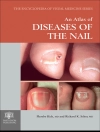This book offers a comprehensive guide to peritoneal dialysis (PD). Home dialysis, and more specifically PD, is growing in popularity in the US. By conservative estimates, experts suggest that 45 percent of dialysis patients in the US can be on home dialysis. However, the current penetration rate is only 10 percent. This is changing with an expected major increase in the next 5 years. One of the reasons for the low uptake is that many nephrologists lack comfort and confidence in using PD as a dialysis modality.
This book addresses those concerns by covering all aspects of PD. Chapters include its history, patient selection, implementation options, comorbidities, quality of life concerns, and developing approaches to treatment. This comprehensive resource fills the unmet need for a practical, hands-on book that is both detailed and can work as a quick reference.
This is an ideal guide for academic nephrologists, private practice nephrologists, NPs, PAs, nurses, fellows, and residents.
Tabela de Conteúdo
History of peritoneal dialysis.- Physiology of peritoneal dialysis.- Patient selection and training for PD.- Peritoneal dialysis solutions.- Peritoneal dialysis equipment/machines.- PD catheters.- Adequacy of peritoneal dialysis.- Techniques of peritoneal dialysis.- Peritoneal dialysis in acute kidney injury: prescribing acute peritoneal dialysis therapy.- Prescribing chronic peritoneal dialysis therapy.- Urgent Start PD.- Infectious complications related to peritoneal dialysis.- Non- infectious complications during peritoneal dialysis.- Common ESRD complication in PD, and the differences with HD.- Peritoneal dialysis in the diabetic patients.- Peritoneal dialysis in special situations.- Survival in peritoneal dialysis population.- Quality of life in PD patients.- Continuous ambulatory peritoneal dialysis vs. automated dialysis: are there differences in the outcome? .- Peritoneal dialysis in children.- Intraperitoneal chemotherapy.- Commonly asked questions.- Howto build a successful PD program.- Peritoneal dialysis in developing countries.-
Sobre o autor
Anjay Rastogi, MD, Ph D
Director | CORE Kidney Program
Professor and Clinical Chief
Division of Nephrology | Department of Medicine David Geffen School of Medicine UCLA
UCLA Health
Los Angeles, CA
USA
Edgar V. Lerma, MD
Clinical Professor of Medicine
University of Illinois at Chicago
College of Medicine
Chicago, IL
USA
Joanne M. Bargman, MD, FRCPC
Professor
University of Toronto
Toronto, ON
Canada












